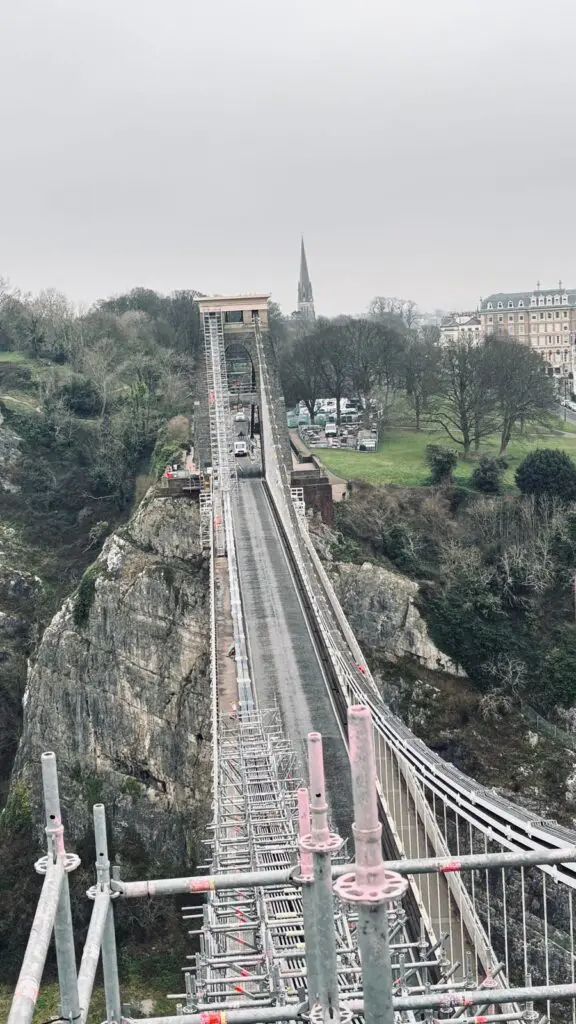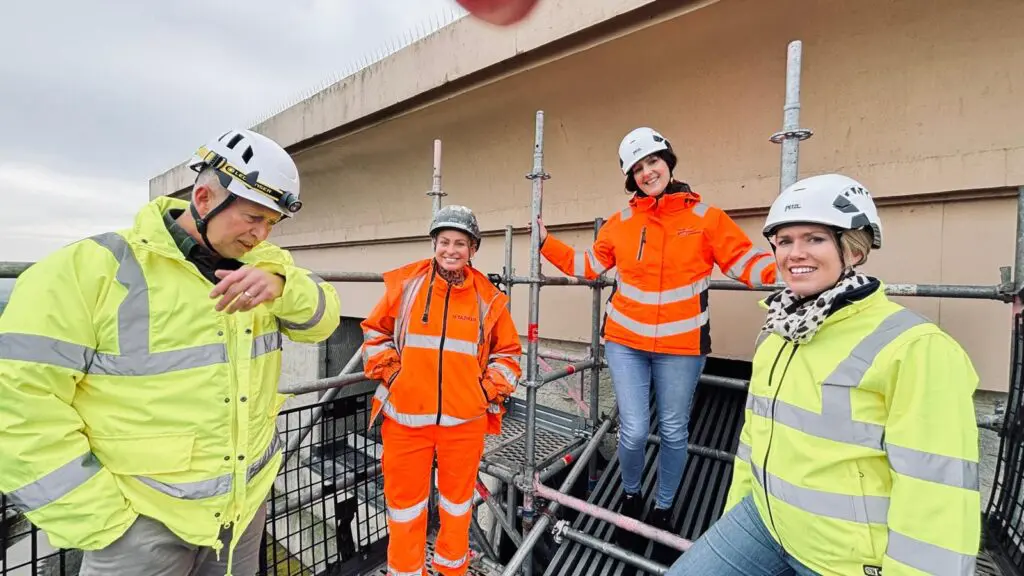
January has seen a flurry of activity (and thankfully not snowfall) as our landmark project to refurbish the bridge chains has continued through wind and rain and gloomy winter days. Thank goodness for paint that can be applied in wet weather and damp conditions!
Perhaps the most exciting and noticable development has been the installation of the bridge’s new energy-efficient LED lighting system along the North (repainted) side of the bridge! The large and clunky lights (which many people thought were CCTV cameras) were completely removed when painting work began, and have been replaced by subtle LED strips which will provide a consistent line of illumination that highlights the bridge’s swooping curves. In addition to this, brand new uplighters have been installed at the base of each hanger, illuminating the delicate structure for the first time in many decades! New lights are also being installed on the abutments, lighting the towers from the base. If you have been lucky enough to have seen a lighting test taking place, you’ll know that our new lighting system has the capability to light the bridge in colour. This is an exciting new development that will mean we can illuminate the bridge for special occasions, although the lighting will be a warm white on most days to preserve the historic environment.
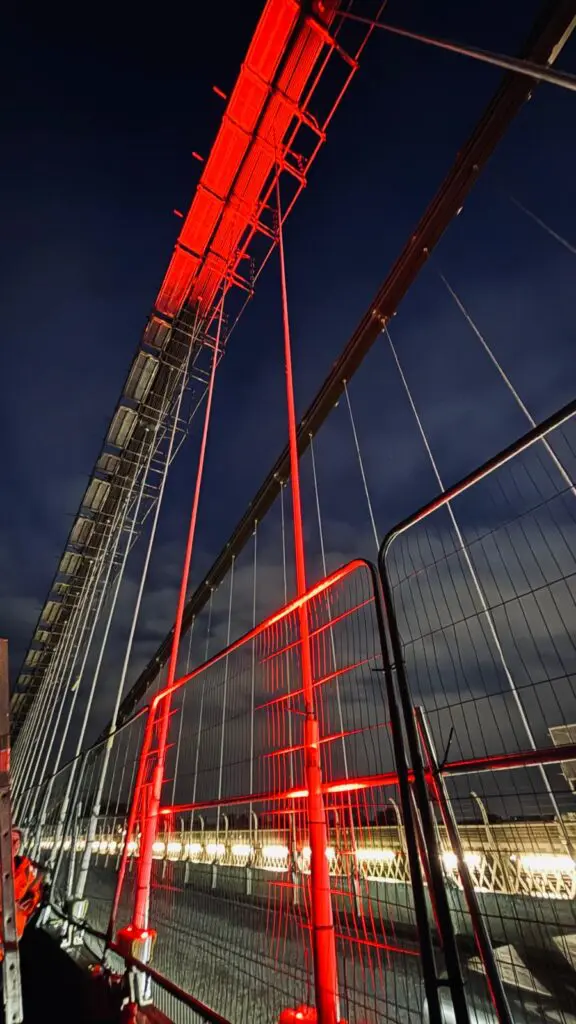
The team have also been working on the underdeck gantry, installing lights that will illuminate the bridge’s Old Red Sandstone abutments. Tests to ascertain the exact positions of these lights is still ongoing, so watch out for these parts of the bridge being lit up for tests!
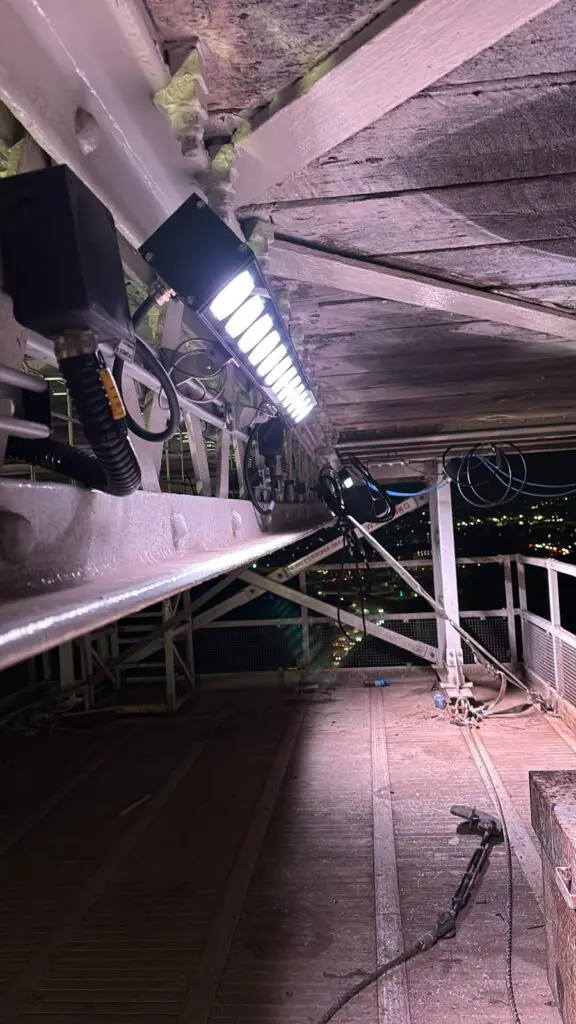
Underground, in the inclined shafts and anchorage pits where the bridge’s chains are fastened into the bedrock, cleaning and painting work has been progressing. The team have undertaken the dirty and sticky work of removing years worth of bitumen and denso tape (which prevents corrosion by providing a long lasting seal as it’s coated with a type of wax or petroleum jelly), jetwashing the chains with hot water, and repainting them with three coats of bitumen based paint that will seal and protect the ironwork for many years to come. This special paint only comes in black and takes several days to fully dry, but is now all that is needed to provide a sufficient level of protection.
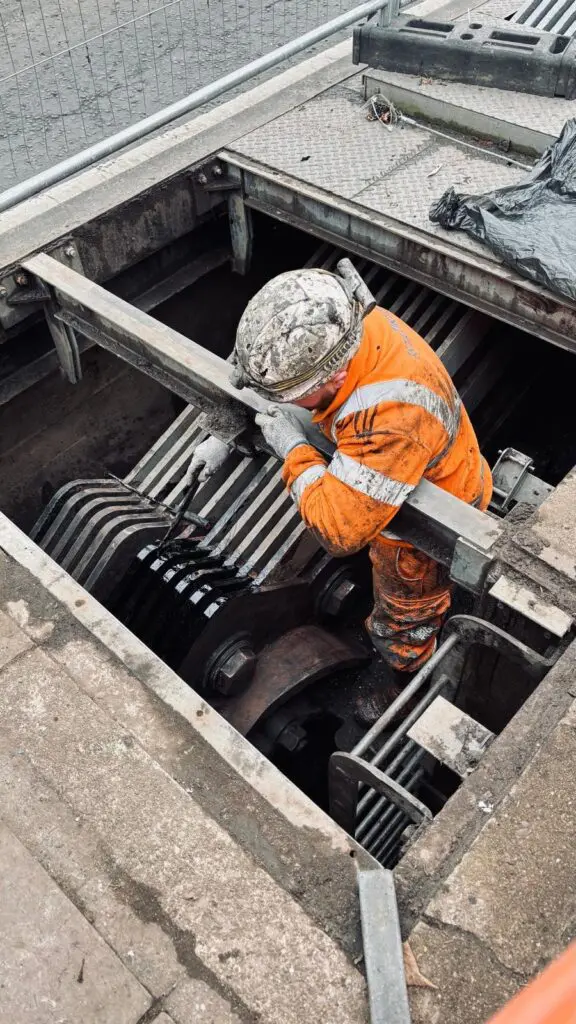
With much of the scaffolding now removed or in the process of removal, the above ground paint team have been focusing on ‘snagging’ and are painting each ‘touchpoint’ – places on the chains that could not be given their final coats of paint because the scaffolding system was in the way. Once this has been completed, the next job will be to reattach the safety fencing along the footway and re-lay the Welsh pennant flagstones which make up the paving at the base of each tower. As several of the original stones were cracked or damaged, matching reclaimed flagstones (once laid in Clifton Village) have been purchased and will be used to make up the new surface.
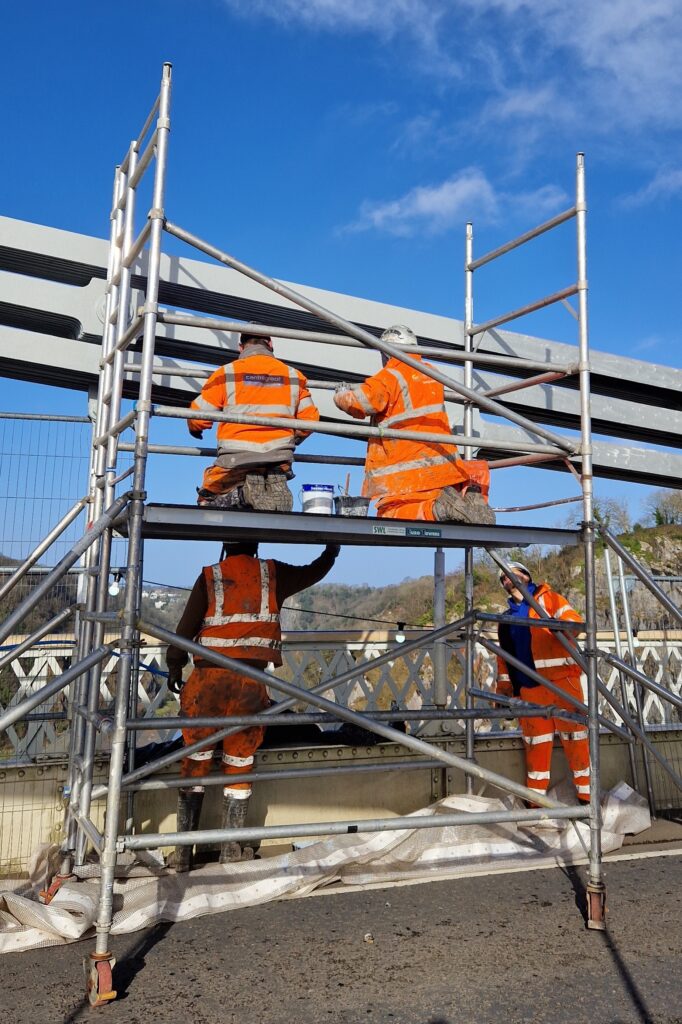
As the refurbishment project is using specialist scaffolding (the same flexible system that was used for the recent restoration of Notre Dame) and must carefully consider the historic nature of the bridge’s structure and take good care of the surrounding natural environment, the work that is being undertaken can be informative and valuable to other similar sites. This month the Bridgemaster was pleased to take representatives from Tamar Bridge on an inspection tour, which provided the rare opportunity to take in the view from the top of the Leigh Woods Tower. Perhaps this is not everybody’s idea of a good time, but it’s par for the course for our bridge engineers!
